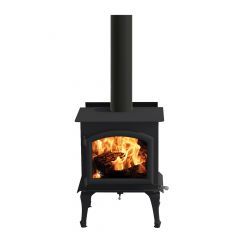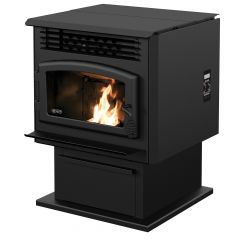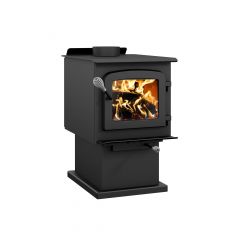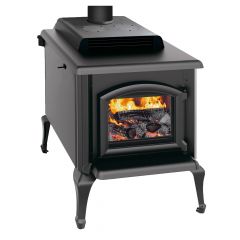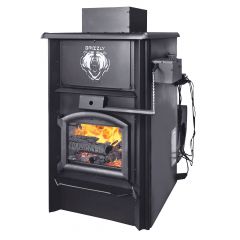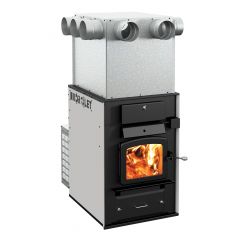A fireplace is a sure-fire way to create an atmosphere and can be a good back-up heating solution, depending on the model chosen. Here are the things to consider when purchasing your fireplace.
Wood stove and wood fireplace
Wood stoves and wood fireplaces certainly bring atmosphere and warmth to a room, which is why they remain very popular.
However, municipalities today regulate their use and require thatwood-burning appliances used in their jurisdictions meet strict environmental standards of no more than 6.5 g/hr of fine particulate matter emissions—a low environmental impact compared to older models that emitted 70 –100 g/hr of particulate matter. Montreal remains the strictest municipality, limiting fine particulate matter emissions from wood fireplaces into the atmosphere at 2.5 g/hr. So, before choosing your stove or fireplace, it’s best to check your municipality’s current regulations.
A fireplace will also require annual maintenance and the services of a chimney sweep to clean and inspect the interior of your chimney and appliance.
If you decide on a wood-burning appliances, make sure to notify your home insurer so you are well covered in the event of a fire.
But all things considered, the cozy warmth enjoyed in front of the flickering flames is surely worth it!
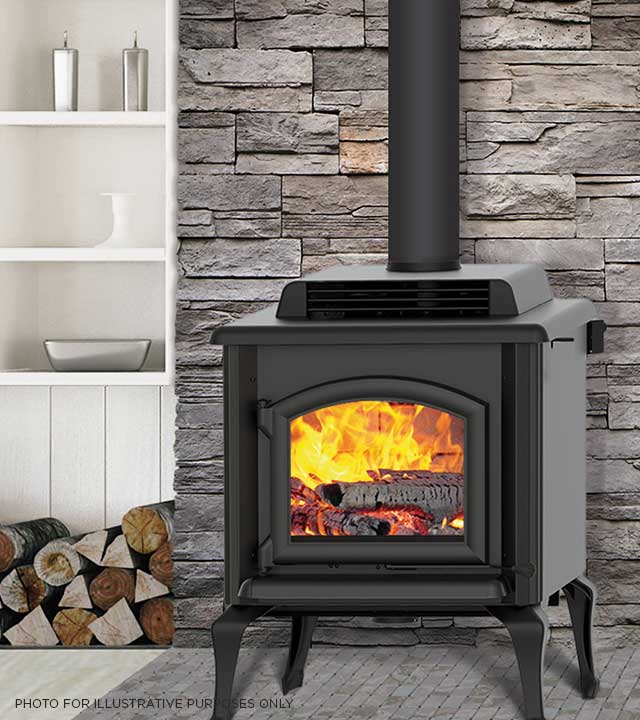
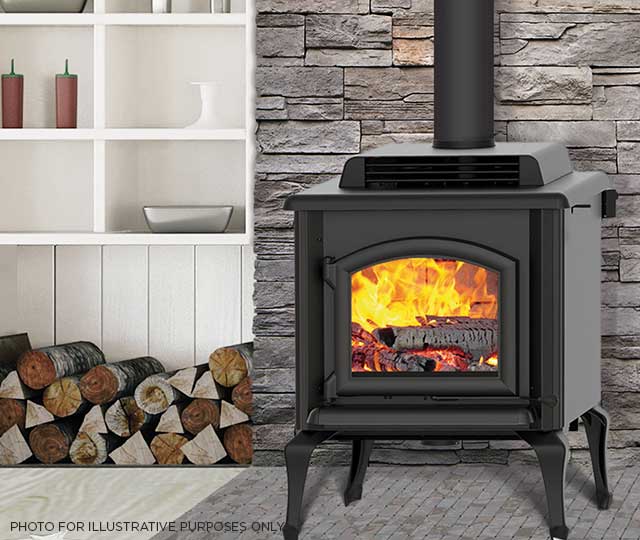
Gas fireplace
Certain stoves and fireplaces are fuelled by natural gas or propane. And while they can’t offer the smell or crackling sound of burning wood, they’re great for creating an atmosphere and heating a room.
There are three types:
- The fireplace insert, which fits into the location of a wood fireplace.
- The zero-clearance fireplace, which is built into the wall.
- The freestanding stove, which looks like a wood stove and produces more heat than other models due to all its surfaces being exposed.
This type of appliance has many advantages. First, it’s easy to use: you can turn it on and off with a thermostat or remote control.
It can also produce consistent heat straightaway and can even be programmed to start when the ambient temperature drops to a certain temperature.
To work out the number of BTUs needed to heat a room, try multiplying the surface area by 40. For example, for a 14 ft. X 14 ft. room (196 square feet), a 7,840 BTU (196 x 40) fireplace is recommended. Installing a more powerful fireplace than necessary is not recommended as it may overheat the room and unnecessarily consume excess fuel.
Naturally, installing such an appliance requires the expertise of a licensed technician.
While gas appliances only emit water vapour (which makes them very eco-friendly!) and do not need to be swept, they still need annual cleaning. When doing so, the technician will check the pressure and condition of the gas inlet.
With the risk of fire virtually non-existent with this type of appliance, your home insurance premium won’t be affected.
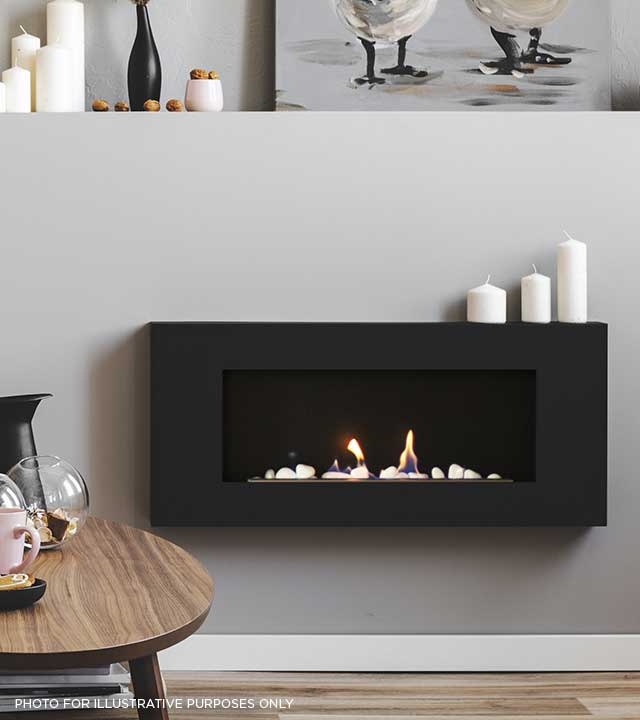
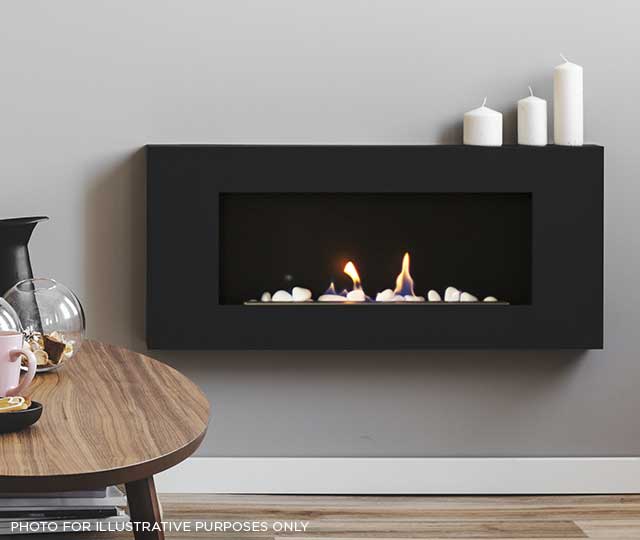
Pellet stove
Here’s an appliance that has seen is popularity grow. Even though it lacks a real fireplace feel, with no visible flames, it does produce a lot of heat and offers a great back-up heating solution.
However, its air circulation, combustion gas exhaust and pellet supply systems run on electricity and cannot be used in the event of a power failure unless they are connected to a generator.
As its name implies, the stove uses pellets—small cylinders of compacted wood that can burn for 24 hours. Once loaded into the stove’s hopper, the pellets are independently fed through an auger into the firebox, thus providing regular and consistent heat. The appliance automatically stops when all the pellets have been burned.
Note that most pellet stoves have a thermostat to adjust and maintain the desired temperature.
Many people like this type of fireplace because pellets come in bags and are easier to store than cords of wood. However, this appliance requires a great deal of maintenance, including weekly cleaning of the firebox’s interior parts, monthly vacuuming of the vents, frequent cleaning of the glass, and annual cleaning of the chimney and the whole stove.
As with the wood fireplace, some municipalities have also introduced regulations regarding its use due to its environmental impact.
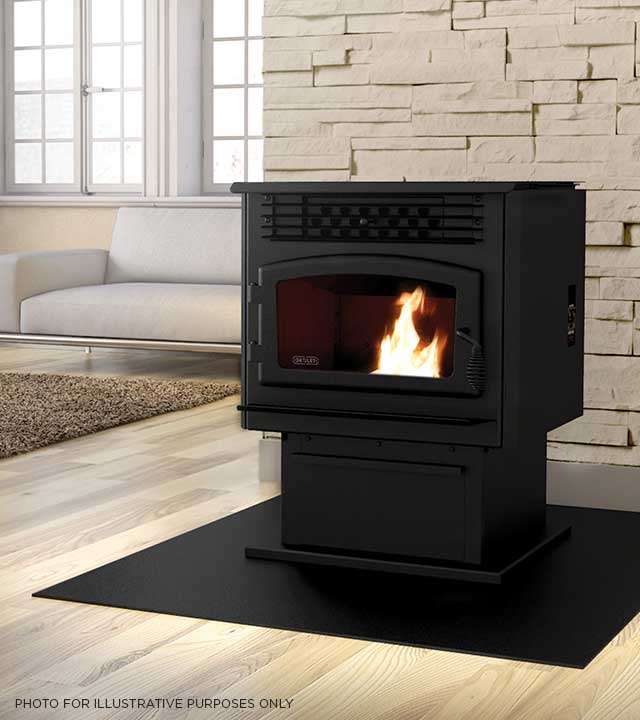
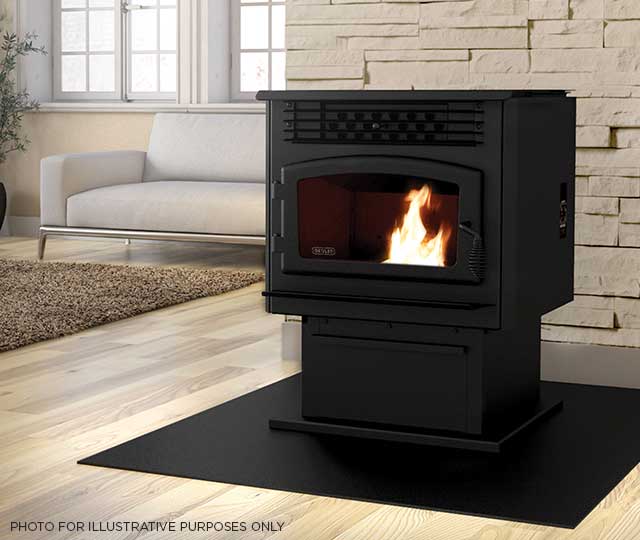
Tips: Even though you can install it yourself, it’s best to contact a specialized technician.
And finally, you will have to notify your insurer of your pellet stove and expect your premium to increase as several claims are made each year as a result of damage caused by non-compliant installation or poor maintenance.
Electric fireplace
This is a great option for creating a cozy atmosphere when installing a wood fireplace is prohibited or when a gas fireplace is not possible.
However, an electric fireplace generally produces less heat than any other model and is therefore not a reliable back-up heating system (an electric fireplace typically has a rating of 1,500 watts, or produces about 5,000 BTUs of heat while a wood or gas fireplace generates about 30,000 BTUs of heat).
There are, however, some more powerful models with an output of 4,600 BTUs, which can heat a room approximately 37 sq.m (400 sq.ft.) and others with quartz infrared heating, that, as the name implies, generate heat from a quartz infrared light. These heaters can heat a room up to 93 sq.m (1,000 sq.ft[m1] .).
There are four electric fireplace models:
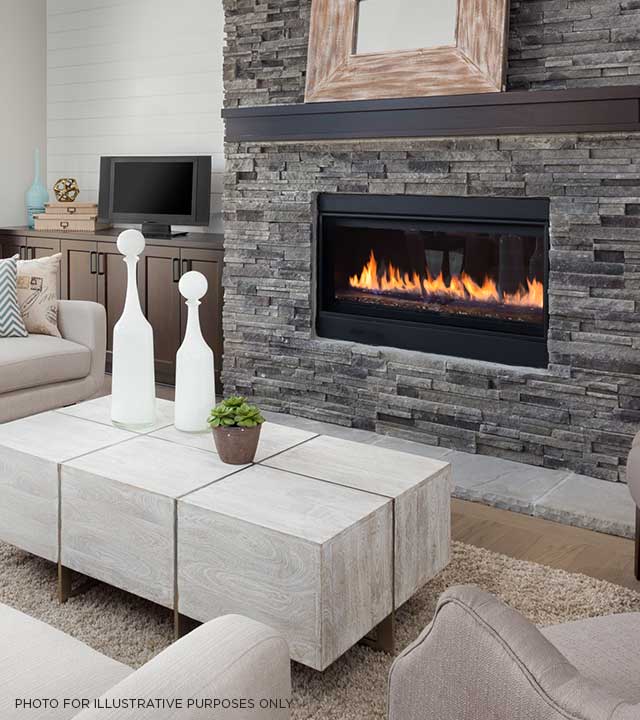
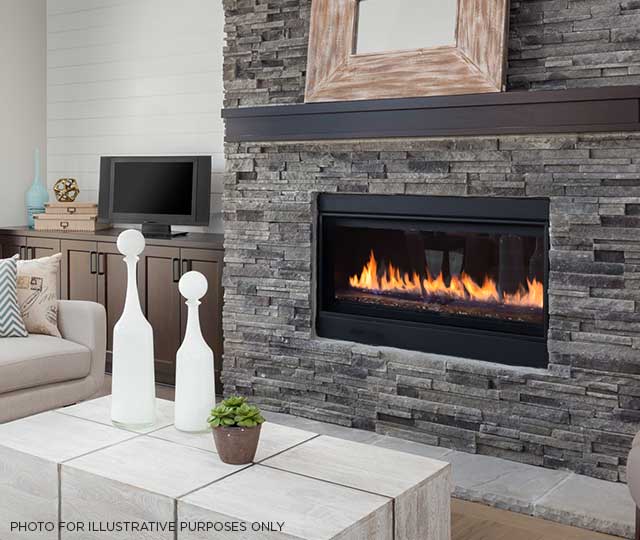
Wall-mounted electric fireplace
By being fitted to the wall, this model frees up floor space and can be installed in a house, condo or apartment. It especially suits modern decor.
Electric fireplace with mantel
With its wood fireplace look, this more traditional design will add a cozy touch to the living room, dining room or family room.
Built-in electric fireplace
Installed in an audiovisual-type cabinet, this fireplace gives your living room great character.
Electric stove
Perfect for a cottage or rustic decor. Its compact size lets you easily move it wherever you like.
Whatever model you choose, this type of appliance offers many significant benefits. On the one hand, installation is quite simple: just plug the fireplace into a dedicated circuit to avoid overloading. When in doubt, call an electrician or technician. The electric stove also requires very little maintenance due to most models using long-lasting LED bulbs.
Because it uses no fuel, it is one of the most eco-friendly options and does not affect your home insurance premium.
In the end, whatever fireplace you choose, make sure you weigh up all the key elements to make an informed purchase that meets your needs.
Need more advice or have special needs?
Feel free to contact your local BMR dealer or visit our selection of products directly on our website.
